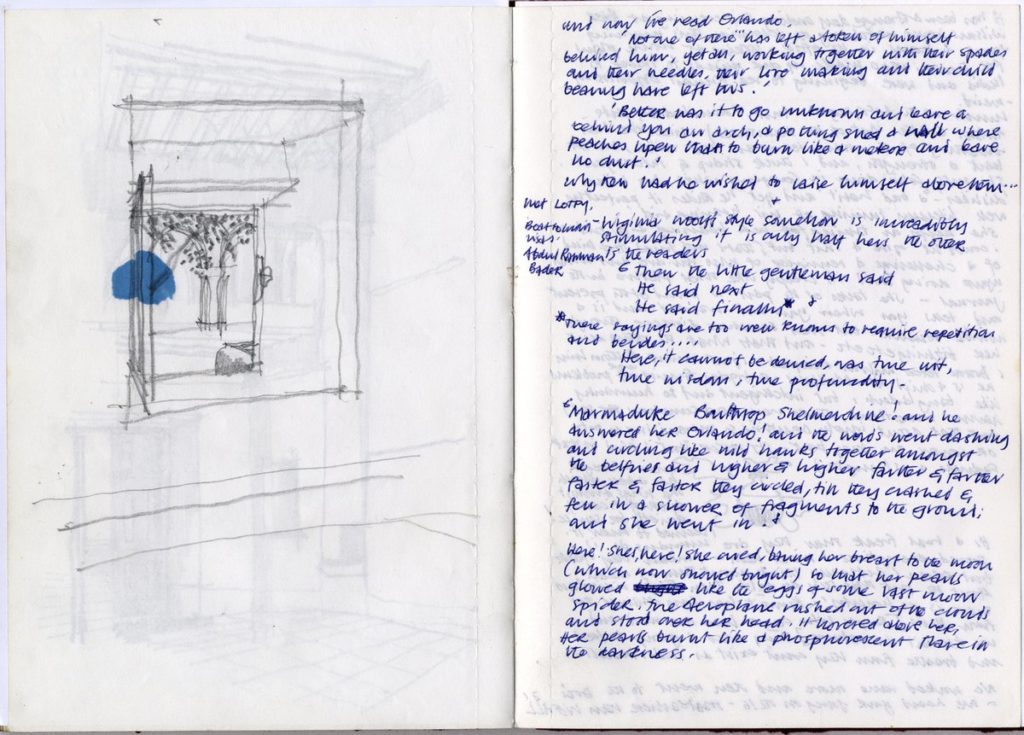Informal Housing in Fars (Iran) and Kuwait, 1974
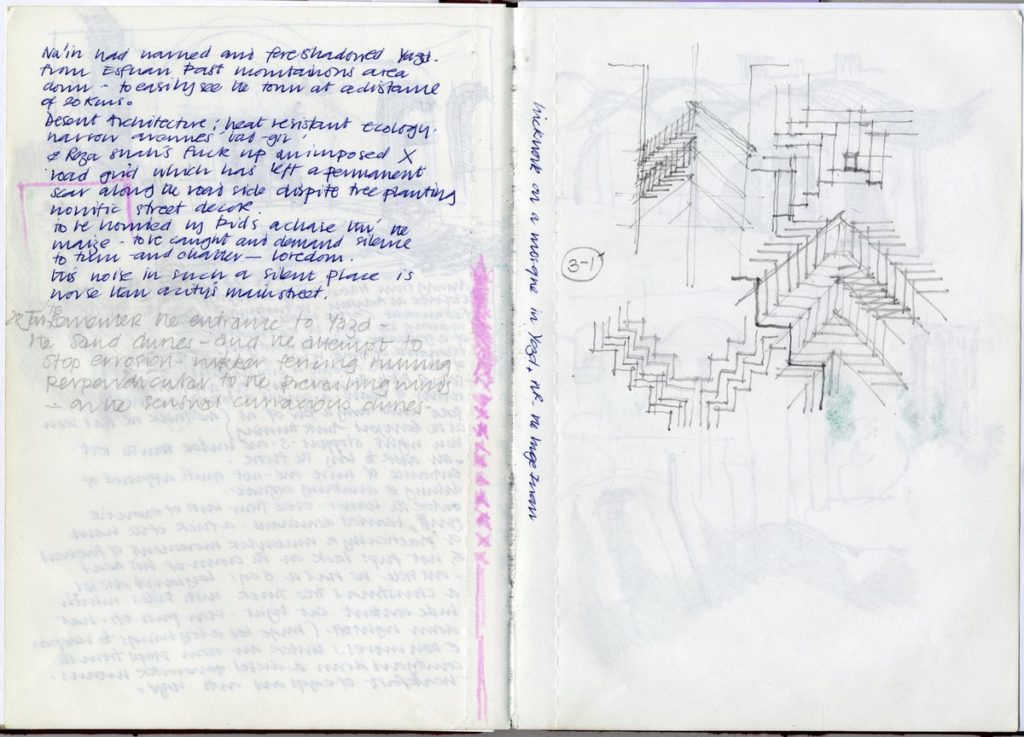
This is another world – Yazd, a desert town really. It is troglodytic – a response to a hot, dry climate, so it is cut into the ground using mud brick, the wind catchers and domes create the silhouettes. So these pages are about the visit to Yazd – getting up onto those roofs, getting in touch and feeling the world of ceramics of the domes set against landscapes.
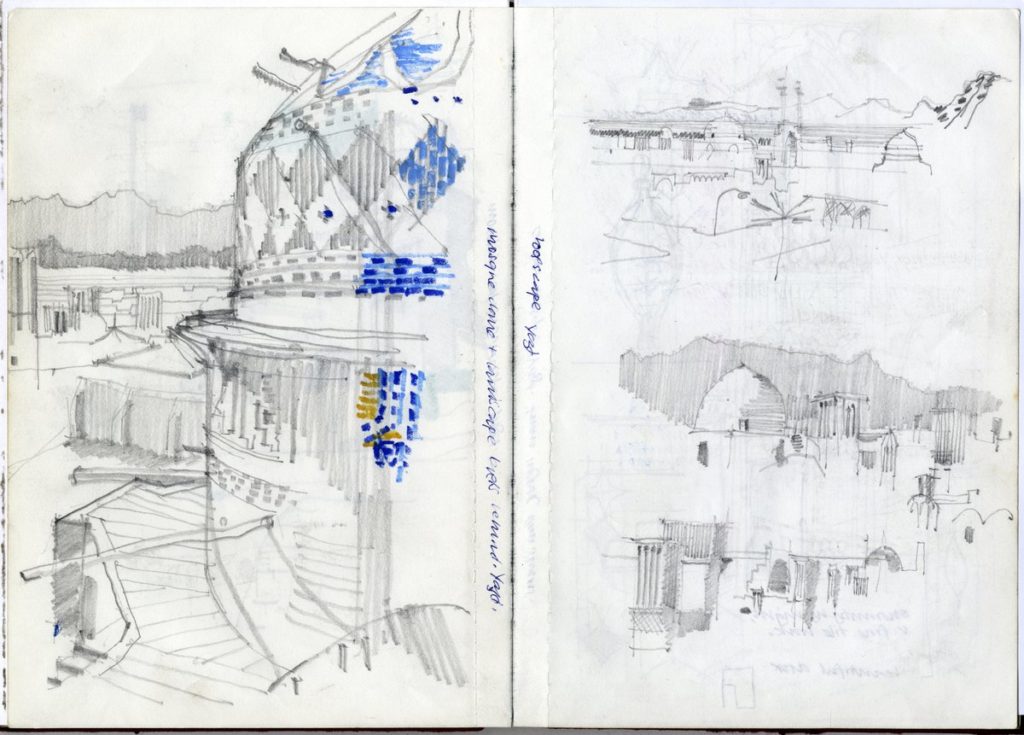


All the time feeling something about the politics that undid this. It is interesting that Khomeini is part of the revolution in ‘79, he was in exile in Iraq before returning to Iran. So there are the Pahlavis – The Shah’s tribe – and the Khomeinis. What one is coming across in Yazd is an urban opposition – nomadic settlements.
We realised working with the anthropology department of the University of Shiraz that in times of political struggle, of insecurity, animal husbandry becomes a way of creating an economic framework. You have wealth in hand in animals rather than in physical fabric. Looking at a map of Fars, which is a tribal map, one sees how The Shah’s father had run roughshod over the tribes. There were still battles between the national army and tribal groups well into the 60s. With the rise of centrist power you get a consequential reduction in the basic drive to sustain a nomadic way of life. Hence the question of settlement.

There was pressure to settle nomads, to control them. A disturbing cultural result arose with the drive to settle, you have an artificial mixing, what a painter might describe as terminal grey. You have the clarity of tribal textiles and carpets – and then the political will to settle tribes. They set up central … you couldn’t call them schools, but centres for the production of tribal artefacts and particularly carpets. Then you lose the iconography or clarity of a particular tribal type. So what we were watching was the will to control and in so doing, the destruction, a loss of tradition and continuity.
Any tribal group had its leaders – the khans, were of an aristocracy – so they would be part of a discourse which was urban, a lifestyle that bridged the nomadic and city. It was inbred by at least 2500 years of journeying between summer and winter encampments, and that is what the group is doing following low- to highlands, climatic cycles over a year to sustain their herds. Ethnographic films provide important evidence – there is a brilliant film ‘Grass: A Nation’s Battle for Life’ (1925), not of the Qasqhai but following the Bakhtiari. The film is about the annual cycle of passage between lowlands and highland pastures.
In Yazd there was wonderful organic architecture which had been mauled by the regime. The guts were exposed by the insertion of roads which cut through, the manifestation of the desire to suppress and control, which had bred such resentment in part of the country. This notebook gets us to this … Some of the cities drew their water from mountains twenty to thirty kilometres from city. You can see the linear principals – little breathing holes, under which miners who dug the tunnels to create the courses that drew water into the city would go. One had to go down deep flights of steps to be able to collect fresh water in the town.
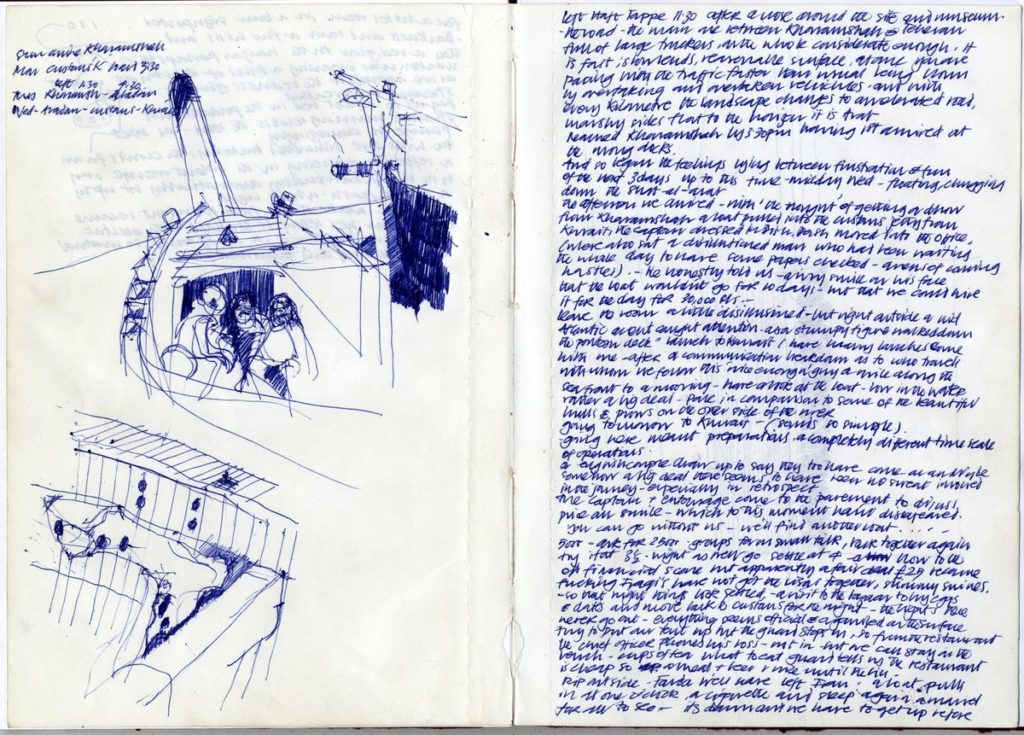
Then we couldn’t drive through Iraq – the animosity between the neighbouring countries erupted – and we could only get to Kuwait by boat. The route took us to the marvellous world of the Elamites – mud brick ziggurats of great antiquity and well preserved and then to the Gulf. I wanted to show this site of extraordinary conflict, the point at which the Tigris and Euphrates converge to become the Shatt al-Arab … It was a right of passage with the motorcycles tied to the bow end of the Dhow, accompanied by group of Hadji on their journey to Mecca.
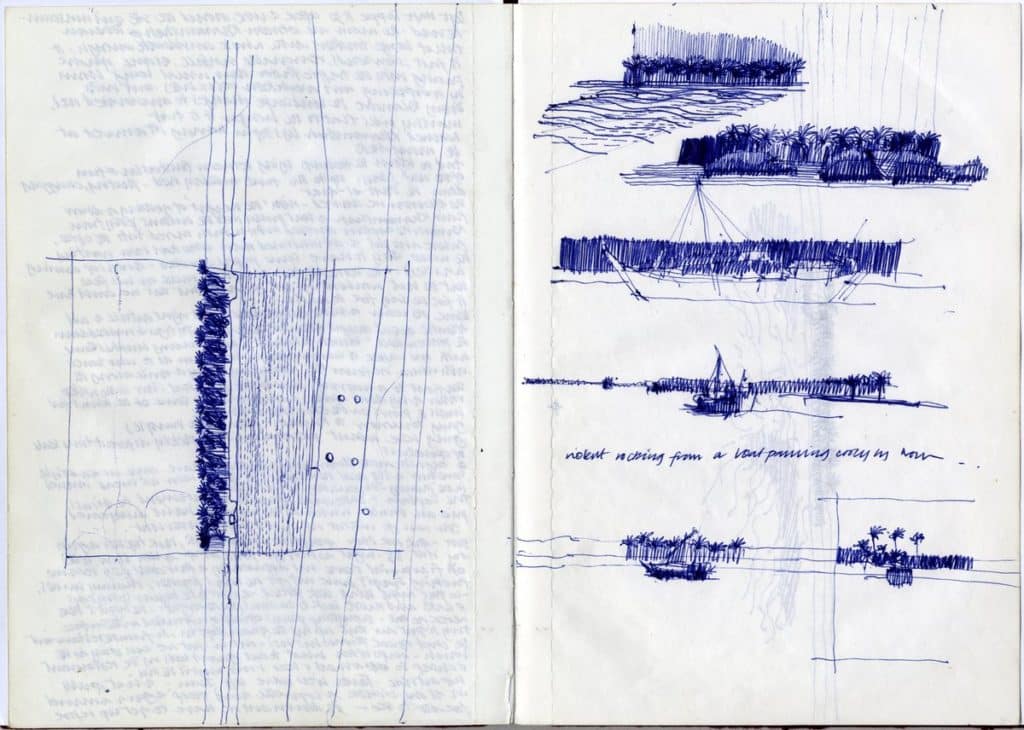
In this drawing, I am describing the knuckles of wood, the beauty of form of the Dhow and the horizons of the Shatt al-Arab. Once out into the Persian Gulf, the propeller shaft broke. We were caught in the midst of a great storm, lolling around in the sea – this was as close a scrape with death that I have ever had. I can still see this huge Iranian guy, cracking sunflower seeds while he bailed water. A day-and-a-half later, a makeshift repair and in a foggy calm I remember waking up – waking up to find a smiling face with a set of gold teeth. So we got there in the end.
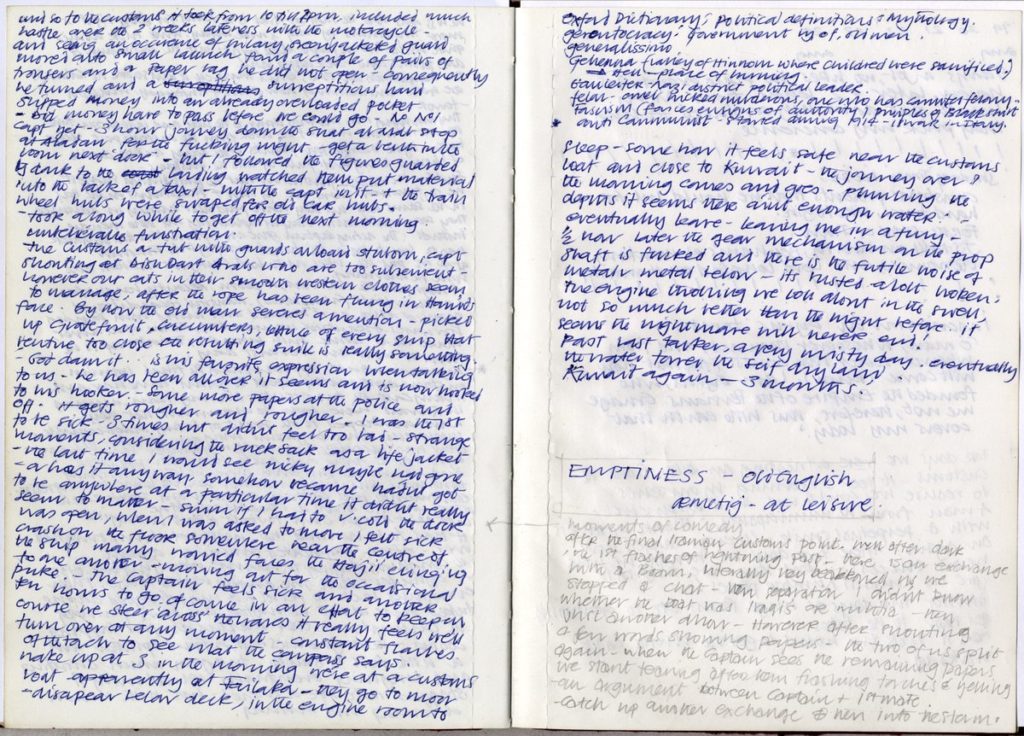
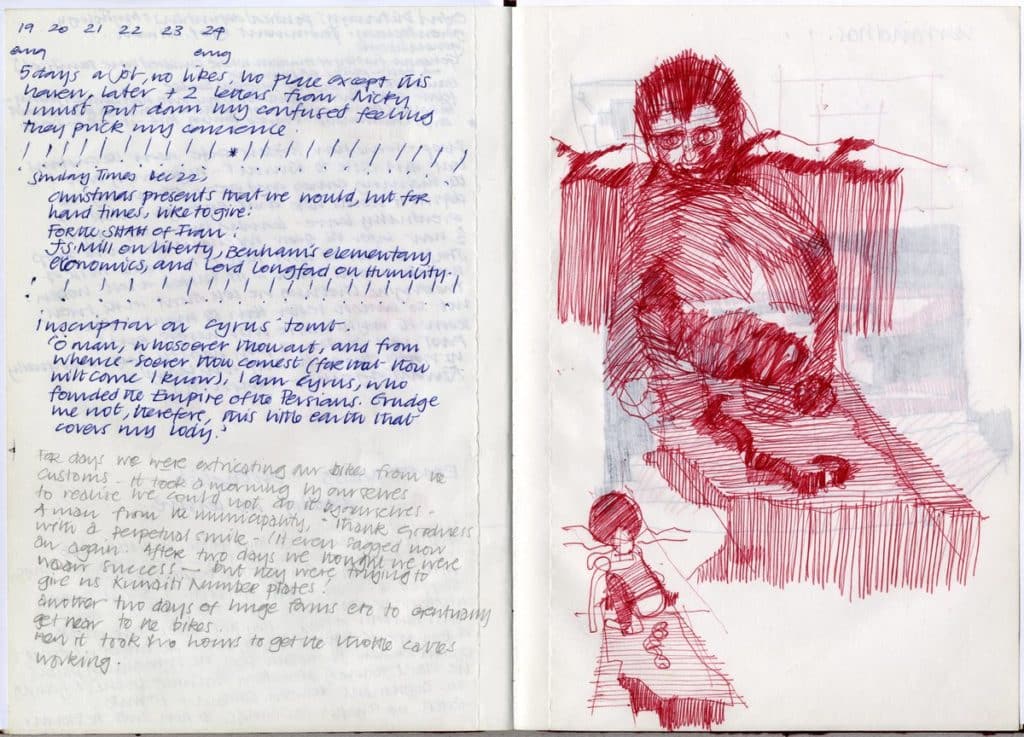
That then concluded with three months in Kuwait, partly because I had grown up there, working for the Kuwait Housing Authority on issues involved in nomadic and worker settlements on the urban fringes. We were looking at how we could work with informal settlements known as Ashish against atrocious system buildings that were being prefabricated, that the government imposed with no sensitivity to the Arab Bedouin society.
Then what unfolded was this world, the Ashish on the fringes of Kuwait that had evolved in an organic way. The materials were recycled from the new imported artefacts for example the packing cases for cars. Traditional courtyard housing captures sky, water (well) and nature (tree) with surrounding rooms defined by the width of the Dhow on which precious timber boughs were transported. The bough supported palm mats above and then the mud roof on top of the mat. That takes us through the end of that sojourn. It was an extraordinary year and astounding that these sketchbooks survived the panniers of my motorcycle. I was 22.
